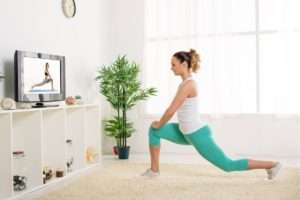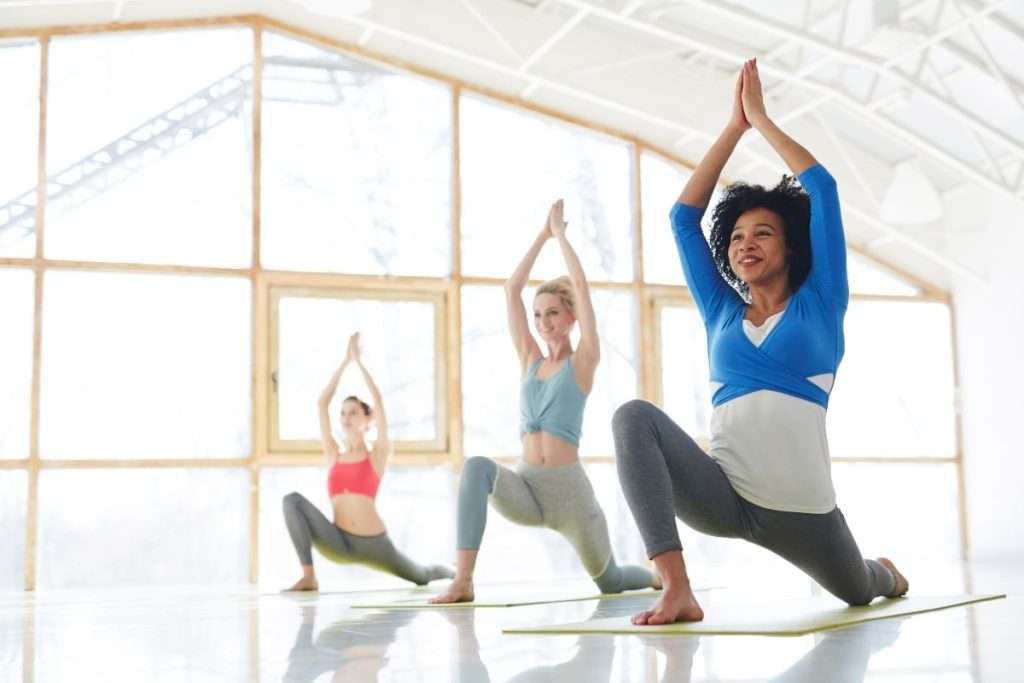The benefits of a healthy physical condition are endless. It’s the surest way to be a better you at little or no cost!
You are probably tired of hearing about the benefits of a healthy physical condition since fitness regimes and dietary guidelines are littered all over social media. This unusual persistence should be a sign of how important having regular physical exercise is, right? Yet, according to statistics, only 19 % of the population in the US engage in daily physical activity.
- The benefits of a healthy physical condition are endless. It's the surest way to be a better you at little or no cost!
- So just how important is it to be physically active?
- How does regular physical activity affect your health?
- (1) Regular physical exercise slows down aging
- (2) Regular physical exercise improves sleep
- (3) Regular physical exercise boosts metabolism
- (4) Regular physical exercise lowers your blood pressure
- (5) Regular physical exercise lowers your cholesterol
- (6) Regular physical activity promotes weight loss
- (7) Regular physical exercise improves brain/mental health
- (8) Regular physical activity increases physical/muscular strength
- (9) Regular physical exercise prevents bone diseases
- (10) Regular physical exercise improves blood circulation
- (11) Regular physical exercise reduces cancer risk
- See your doctor before you start
- Final words on the importance of regular physical exercise
- Guidelines for physical activity
- Ways to be Active
So just how important is it to be physically active?
The human body is designed to carry out a variety of functions and it does so best when it is in good physical condition.
This allows us to live happier, healthier lives with reduced risk of illness and injury. Regular physical exercise boosts your mood, emotional wellness and ultimately, self-confidence.
More specifically, regular physical exercise:
- Slows down aging
- Improves sleep
- Boosts metabolism
- Lowers Blood pressure
- Reduces “bad” cholesterol
- Promotes weight loss
- Improves brain/mental health
- Increased physical/muscular strength
- Prevents bone disease
- Improves blood circulation
- Reduces cancer risk
A Fitbit is a great device to track your activities and help you reach your fitness goal. This slim, easy to use Fitbit also has 24/7 heart rate tracker and sleep training.
As the world’s population continues to age, chronic illnesses are increasing at alarming rates. Thus, maintaining a healthy lifestyle becomes more important than ever before.
This blog post will outline and explain some reasons why it’s essential to have an active lifestyle and how you can get started on your journey today!

"Health is not valued till sickness comes." - Thomas Fuller
Read also: 20 Easy ways to increase energy levels
How does regular physical activity affect your health?
Physical activity is defined as any bodily movement produced by skeletal muscles that results in energy production. The most common forms of regular physical activity include walking, running, lifting weights, swimming, cycling and yoga.
Admittedly, sometimes it’s not possible for us to be physically active as much as we desire. However, the nature of the exercise you perform is not as important as consistency.
Therefore, you should go for a routine that you enjoy instead of following what everyone else is doing. Enjoying your physical exercise routine will encourage you to stick with it.
But before we get into the details, let’s first talk about what exactly a “healthy lifestyle” is.
The World Health Organization (1999) has determined that a healthy lifestyle is a way of life that decreases the risk of serious illness and premature death.
This includes eating proper amounts of nutritious food, being physically active, not smoking, and drinking alcohol in moderation or not at all.
Click here to learn why breakfast is still the most important meal of the day and expert tips to make this first meal as healthy as possible.
(1) Regular physical exercise slows down aging
In a study published in the European Heart Journal (2019), scientists inspected the effects of exercises on the cells.
The study lasted over 6 months and included 124 participants who engaged in three different exercise modalities:
- Endurance training (e.g., jogging, swimming)
- High-Intensity Interval Training (HIIT)
- Resistance training (i.e., weight lifting)
The fourth group of participants was instructed to maintain their regular exercise routine – they were the control group.
Analyzing the data collected over 6 months revealed that endurance training and HIIT increased the activity of an enzyme known as telomerase.
This enzyme protects the cells by increasing the length of telomere – an indispensable process to inhibit apoptosis (i.e., programmed cell death), and eventually, aging.
The control group displayed no change in telomerase activity.
In another study, a team of scientists evaluated the effects of exercise on the skin and muscles of mice. The researchers determined that physical activity prevented age-related decline in collagen production and increased the process of cell renewal and repair.
This means that physical exercise helps the body produce more collagen, an essential skin structural protein.
Increased production and regeneration of cells delay cellular aging (i.e., senescence) and slow down the signs of prematurely-aging skin, such as wrinkles. In addition, cardio exercise can drastically improve your joint flexibility, which helps fight age-related articular stiffness.

Those who think they have not time for bodily exercise will sooner or later have to find time for illness. - Unknown
(2) Regular physical exercise improves sleep
The National Sleep Foundation conducted a survey to find out the sleeping habits of participants comprising different age groups. The results were published in the Journal of Applied Physiology .
The findings revealed that 70% of Americans reported experiencing sleep issues on a regular basis, while 40% experienced poor quality of sleep and 18% had difficulties falling asleep.
The survey also found that the number of people suffering from sleeping problems increases with age, affecting over 50% of individuals aged 24 – 64 years old.
Fortunately, regular physical activity is also beneficial for improving your sleep patterns.
A study published in the Journal of Strength & Conditioning Research showed that after 14 days of participating in aerobic exercise (2 hours per week), participants reported significant improvements in their sleep quality.
Likewise, another study conducted at the State University of New York found that a moderate-intensity aerobic activity performed for 60 minutes can significantly boost your melatonin levels and reduce insomnia.
Read also: 27 healthy habits to naturally improve your sleep.
(3) Regular physical exercise boosts metabolism
A study published in the American Journal of Epidemiology, showed that after 6 months of participating in aerobic exercise, participants increased their BMR by 7% and 12%, respectively. Improving your basic metabolic rate is important for losing weight and burning fat.
For those unfamiliar with BMR, it is a metabolic parameter that estimates the number of calories your body needs in 24 hours.
It is subject to several factors, including :
- Age
- Sex
- Body type
- Diet
- Lean muscle mass
- Degree of physical activity
- Genetics
Unfortunately, our BMR slows down dramatically as we age, increasing the risk of obesity and other metabolic diseases (e.g., diabetes, heart disease). The most effective antidote for this issue is regular exercise.
(4) Regular physical exercise lowers your blood pressure
Physical activity is an excellent way to reduce your blood pressure levels. The American heart association recommends at least 150 minutes of moderate physical activity per week.
Accomplishing this goal can reduce your risk of hypertension, coronary artery disease and stroke.
Physical activity is especially effective in treating both high systolic (top number) and diastolic (bottom number) blood pressure. However, depending on the type of physical activity you choose, the effects can vary.
In fact, according to a study published in the New England Journal of Medicine, people who engaged in regular physical activity (the equivalent of walking at least 30 minutes per day) had a significantly lower risk of developing hypertension than those that did not meet this requirement.
In numerous studies, researchers analyzed the data of thousands of individuals and determined that low-intensity activities like walking were effective at reducing systolic (top number) and diastolic (bottom number) blood pressure, with respectable results considering how easy it is to perform this exercise!
Additionally, research has also proven that high-intensity interval training was significantly effective at lowering both systolic (top number) and diastolic (bottom number) exercise, even more effectively than endurance/continuous moderate-intensity training.
Note: High-intensity interval training (HIIT) refers to numerous bouts of exercise of high intensity. Continuous moderate-intensity exercise training (CMT) refers to exercise that can be sustained for 30 minutes or more (Ciolac, 2012)

Exercise is the key not only to physical health but to peace of mind. - Nelson Mandela.
(5) Regular physical exercise lowers your cholesterol
Diabetes and obesity are well-known contributors to cardiovascular disease and heart failure. But, they’re also often associated with increased cholesterol levels.
Fortunately, physical activity is an effective treatment for reducing cholesterol and preventing the onset of cardiovascular diseases.
It has been proven that exercise reduces low-density lipoprotein (LDL) and triglyceride levels, while increasing high-density lipoproteins (HDL).
This means that physical activity not only relieves symptoms of cardiovascular disease, but also protects you from suffering a heart attack or stroke in the future.
Researchers determined that participants who engaged in physical activity at least 5 times per week had cholesterol levels 20% lower than those who did not engage in physical activity on a regular basis.
Additionally, exercising at least 5 times per week was also associated with an increase of high-density lipoproteins (HDL) or “good” cholesterol levels by 19%. A powerful improvement!
In one study, researchers divided participants into three groups and assigned them to different physical activity regimes based on their body mass index (BMI).
The results showed that exercise reduced total cholesterol levels by 9.1%, LDL (bad) cholesterol levels by 10.5%, and triglyceride levels by 14%.
In another literature, researchers determined that physical activity had a positive effect on lipid metabolism in both moderately overweight and obese participants.
The results showed that low-intensity walking was equally effective as moderate-intensity activities.
(6) Regular physical activity promotes weight loss
Undeniably, physical activity is an essential part of any weight-loss plan.
In general, more physical activity equals more calories burned. On a daily basis, you have to burn 3500 calories to lose one pound.
If you exercise regularly and get your heart rate up, chances are that you will not only lose the desired amount of weight, but also reduce the fat around key organs in your body such as your heart, brain, liver, kidneys, and more!
This is critical since visceral fat can dramatically increase the risk of hypertension, heart disease, high blood sugar and even certain types of cancer.
Physical activity also releases endorphins, which are natural painkillers that increase your feelings of well-being and reduce stress.
Finally, exercise helps to maintain a healthy metabolism by boosting your metabolic rate, even for several hours after you have worked out.
In a 2010 study, researchers evaluated multiple weight loss workouts to determine the best one for fat loss.
Researchers concluded that high intensity training is effective and economic at burning body fat and lowering the risk of numerous conditions (e.g., heart disease, diabetes).
Note that obesity can have detrimental effects on your body, especially when you get older. In fact, some experts consider weight loss as the most effective anti-aging modality.
Actually, weight loss could improve your physical and mental health, as well as your skin and general appearance.
Also, if you are not overweight or underweight, being physically active can help you maintain your ideal weight.

"Exercise not only changes your body, it changes your mind, your attitude and your mood." - Unknown.
(7) Regular physical exercise improves brain/mental health
Exercise has been shown to improve both the structure and function of the brain, including elevating the brain’s oxygen supply. In a study published by the Frontiers in Psychiatry in 2018, therapists investigated the benefits of exercise on the brain and mental health.
The results showed that both aerobic and resistance training significantly reduced depressive symptoms. But, only aerobic exercise was able to reduce inflammation in patients with a depressive disorder.
They found that physical activity is a very powerful tool to control the symptoms mental illness, improve cognitive health and prolongs patients’ life spans.
1.A natural cure for depression
It is no secret that exercise can help fight depression. In fact, scholars recommend that patients should start exercising as soon as possible after receiving a depressive diagnosis.
This might seem counterintuitive. How could more physical pain increase your mood? But it actually makes sense when you dig deeper into what’s happening inside your body and brain.
Mood improvement through physical activity occurs because of what scientists call the “runner’s high.” This is brief state of euphoria you experience while exercising that is caused by excessive amounts of certain hormones (i.e., dopamine, serotonin, endorphins).
These hormones help reduce stress and anxiety levels, improve your mood, decrease your appetite, and increase the number of positive memories that you have about yourself. So, when you are feeling down, just so for a run and you’ll likely to immediately start feeling better.
2.Helps control anxiety disorders
Physical activity is well-known as an effective treatment for managing anxiety disorders. In fact, numerous published studies showed that exercise significantly reduces the symptoms of anxiety and depression.
In this particular study, researchers observed that by exercising at least 30 minutes daily, participants experienced significant reductions in panic attack frequency and severity.
Additionally, after regular physical activity (at least 30 minutes per day), patients also showed a positive shift in their perception of anxiety and their overall quality of life. Notably, only approximately 5 minutes of aerobic physical activity is enough to initiate these anti-anxiety benefits (ADAA, 2021).
Use this link to discover 16 tips to help you cope with difficult situations.
3.Improving self-esteem and unhealthy habits
Regular physical activity can also improve your self-esteem, thanks to the increased release of endorphins.
However, when researchers from the found that regular physical activity can effectively improve your quality of life and reduce symptoms of anxiety and depression by boosting your self-esteem.
They found that physical activity is a very powerful tool to control the symptoms of depression and prolong patients’ life spans. Physical exercise has also been shown to prevent and reduce toxic habits such as smoking, gambling and alcoholism.

"Take care of your body, it's the only place you have to live." Jim Rohn
4.Helps prevent Parkinson’s disease
A study published in 2017 showed that regular physical activity has protective effects against neurodegenerative diseases like Parkinson’s disease.
Moreover, researchers found that a physical exercise program that requires higher-level coordination can significantly minimize the risk of developing Parkinson’s disease.
And, as a bonus, these exercises have indirect benefits that also come with a lower risk of neurodegenerative disorders.
For example, physical activity helps boost your body’s stress resistance – which means you are less likely to develop other neurodegenerative disorders like Alzheimer’s disease.
Studies have shown that exercise is capable of preventing brain shrinkage and reducing the risk of developing Alzheimer’s disease.
Physical activity also increases the levels of BDNF (Brain-derived neurotrophic factor), which plays a central role in creating new neurons.
(8) Regular physical activity increases physical/muscular strength
While most people believe that physical strength only results from resistance training, scientists found that aerobic exercises boost physical strength by improving endurance, regulating metabolism, and increasing VO2 max (American Heart Association, 2021).
Physical strength is therefore one of the most beneficial aspects to consider when it comes to selecting an exercise program for you.
In addition, improved muscular strength will improve your posture and overall appearance.
(9) Regular physical exercise prevents bone diseases
Another advantage of participating in aerobic exercises is that they can significantly increase your bone density, which in turn reduces the risk of osteoporosis and other bone related disorders.
In fact, a study published in the Journal of Gerontology showed that after 6 months of participating in high-intensity exercise (i.e., running), participants experienced significant increases in their bone mass density.
(10) Regular physical exercise improves blood circulation
Generally, people with heart disease have lower levels of physical activity than those without the condition, even if they are not overweight or obese.
However, researchers found that running for 30 minutes every day can reduce the risk of death from heart disease by 33%.
(11) Regular physical exercise reduces cancer risk
Research has shown that some physical activities can reduce your risk of certain types of cancer. They are so effective at doing this, they even work better than chemotherapy.
In a study published by The New England Journal of Medicine, researchers found that women who engaged in moderate or vigorous physical activity had a lower risk of cancer than those without the habit.
Researchers suggest that women reduce their risk of breast cancer by moving more and maybe even replacing some of their sedentary time with physical activity!

¨The only person you are destined to become is the person you decide to be.¨ – Ralph Waldo Emerson
| BENEFITS OF PHYSICAL ACTIVITY | MECHANISM OF THE BENEFICIAL EFFECT |
|---|---|
| Slows down aging | Improves joint flexibility Increases collagen production Boosts cell regeneration Decreases cell death |
| Improves sleeps | Enhances sleep patterns Improves sleep quality Decreases insomnia |
| Boosts metabolism | Increases basic metabolic rate |
| Lowers blood Pressure | Decreases the risk of hypertension, heart disease and stroke |
| Lowers lipids | Decreases LDL, triglyceride, cholesterol, increases HDL |
| Promotes weight loss | Decreases body weight and visceral fat |
| Improves brain health | Improves anxiety and depression Enhances self esteem and confidence Decreases toxic habits Lowers the risk of Parkinson’s disease |
| Increases strength | Increases physical and muscular strength Improves posture |
| Prevents bone disease | Increases bone density |
| Decreases the risk of heart disease | Improves blood circulation |
| Decreases cancer risk | Lowers the likelihood of breast, colon and other types of cancer |
See your doctor before you start
Consulting with a doctor is perhaps the most neglected aspect of starting a workout plan. However, this step is crucial as your doctor will examine you and conclude whether an activity suits your physical health and how to improve in the future.
For instance, if you want to run marathons or triathlons, it might be a good idea to get a physical examination. As a result, you will get an insight into your cardiovascular system and its ability to safely handle this.
Similarly, if you have an injury or a long-term condition that prevents you from working out, your doctor will examine whether it is safe for you to start a new workout routine.
Although working out is highly beneficial, it can have certain side effects for some people, specifically depending on the time and duration. For this reason, it is highly recommended to consult a doctor especially if you plan to substantially incorporate intense activities in your daily life.
Use this link to discover all the essential physical self-care activities you should practice daily.
Final words on the importance of regular physical exercise
Regular physical exercise provides the body with a wide range of health benefits that go beyond physical wellness. The list of benefits cited above is by no means comprehensive.
The health benefits of a healthy physical condition to everyday life are numerous. A person who has good physical health can experience improved personal wellness, increased productivity and creativity, reduced risk for disease, muscular fitness, cardiorespiratory fitness, improved body function, better moods and more energy among other things.
Now that you are fully aware of the advantages, it’s time to get started!
Read also: The pros and cons of health incentives in the field of fitness.
If you still have any questions, concerns, or anything you want to add to this discussion, please don’t hesitate to share your thoughts in the comment section below.
Related Topics
Guidelines for physical activity
As for the specific guidelines to follow during physical activity, most experts recommend performing something you enjoy. Regardless, a combination of aerobic activity and resistance training (e.g., lifting weights) is recommended for optimal results.
If you are just starting out with a physical activity program, start slowly and build up your endurance gradually to avoid injuries. This may take some time, but you will feel great when you see yourself become much stronger than before!
Whether that be jogging, weight lifting, tennis, or golfing, what really matters is the consistency in performing these activities.
Consistency is most likely to occur if you are actually having fun instead of contemplating each training session.
With that said, there are some specific steps you need to take in order to avoid any musculoskeletal injuries. These steps include having proper warmups, the gradual increase of intensity, and matching the type of physical activity you adopted with an appropriate nutrition plan.
Ways to be Active
As mentioned above, there are numerous ways to stay active, which can be divided into two categories:
- Individual training (e.g., weight lifting, jogging)
- Group sports (e.g., football, basketball)
If you are a people’s person, you might find it more enjoyable to train with your peers by organizing a group game, such as basketball, football, or beach ball.
Each type of exercise has its advantages and downsides that you need to consider before starting your fitness journey.
Remember, it’s essential to compliment your exercise program with lifestyle factors including a healthy diet.
Interested in testing your health knowledge, use this link to take a quick quiz to assess how much you know.
References
ADAA: Anxiety & Depression Association of America (2021) Exercise for Stress and Anxiety
American Health Association (2021) Why is physical activity so important for health and wellbeing.
Boutcher SH (2011) High-intensity intermittent exercise and fat loss. J Obes.
Ciolac EG. High-intensity interval training and hypertension: maximizing the benefits of exercise? Am J Cardiovasc Dis. 2012;2(2):102-10. Epub 2012 May 15.
Isaksson, H., Tolvanen, V., Finnilä, M.A.J. et al. Physical Exercise Improves Properties of Bone and Its Collagen Network in Growing and Maturing Mice. Calcif Tissue Int 85, 247–256 (2009).
Jiménez-Pavón D, Carbonell-Baeza A, Lavie CJ. Are changes in telomerase activity and telomere length due to different exercise modalities, intensity, or methods: intermittency? Eur Heart J. 2019 Oct 7;40(38):3198-3199.
Ko J, Deprez D, Shaw K, Alcorn J, Hadjistavropoulos T, Tomczak C, Foulds H, Chilibeck PD. Stretching is Superior to Brisk Walking for Reducing Blood Pressure in People With High-Normal Blood Pressure or Stage I Hypertension. J Phys Act Health. 2020 Dec 18;18(1):21-28.
Mandolesi L, Polverino A, Montuori S, Foti F, Ferraioli G, Sorrentino P, Sorrentino G. Effects of Physical Exercise on Cognitive Functioning and Wellbeing: Biological and Psychological Benefits. Front Psychol. 2018 Apr 27;9:509.
Manson JE, Greenland P, LaCroix AZ, Stefanick ML, Mouton CP, Oberman A, et al. Walking compared with vigorous exercise for the prevention of cardiovascular events in women. N Engl J Med. 2002 Sep 5;347(10):716-25.
Willis LH, Slentz CA, Bateman LA, Shields AT, Piner LW, Bales CW, et al. Effects of aerobic and/or resistance training on body mass and fat mass in overweight or obese adults. J Appl Physiol (1985). 2012 Dec 15;113(12):1831-7.
World Health Organization. Regional Office for Europe. (1999). Healthy living: what is a healthy lifestyle?.









